#Scottish Isle Mystery
Explore tagged Tumblr posts
Text
Death at a Scottish Wedding by Lucy Connelly -- Book Review
Happy Tuesday! Death at a Scottish Wedding by Lucy Connelly is out today. Stop by to see what I thought of the 2nd A Scottish Isle Mystery. Happy Reading!

https://bibliophileandavidreader.blogspot.com/2024/01/death-at-scottish-wedding-by-lucy.html
#deathatascottishwedding#cozy mystery#theavidreader#the avid reader#book review#crooked lane books#Scottish isle mystery#lucy connelly
0 notes
Text
Death at a Scottish Wedding by Lucy Connelly
Death at a Scottish Wedding by Lucy Connelly was an Advanced Reader’s Copy courtest of NetGalley. It is a cozy mystery and published on 9 January 2023 from Crooked Lane Books. It is the second book in the Scottish Isle Mystery series. One of Em’s best friends is getting married and they are stranded at Ewan’s castle for the pre-wedding events by a blizzard. An unexpected, and unwelcomed guest is…

View On WordPress
0 notes
Text

Pre-historic
#Callanish#Isle of Lewis#Outer Hebrides#Scottish islands#UK#stone circle#standing-stones#legendary#pre-historic#dawn#atmospheric#timeless#mystery#sunrise#Scotland
49 notes
·
View notes
Text

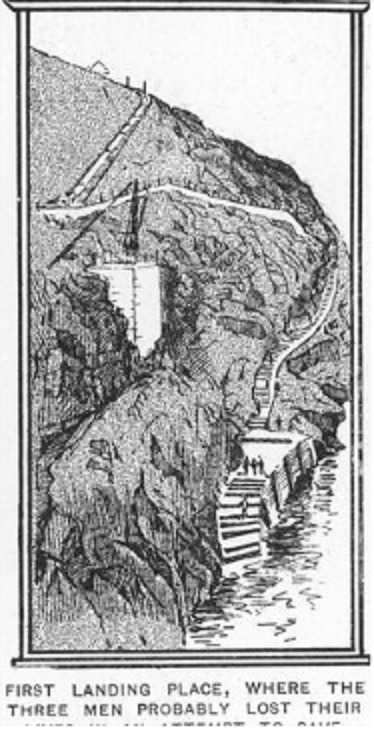
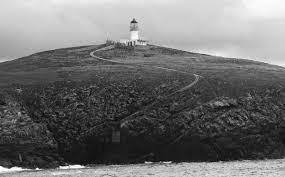
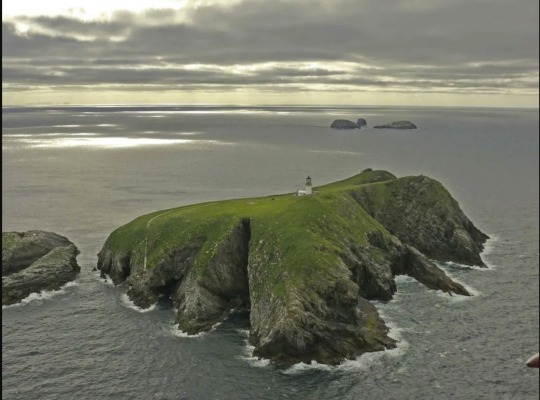

15th of December 1900 is the most likely date that the three lighthouse keepers of the year old Flannan Isles Lighthouse disappeared.
The building of Flannan Lighthouse was plagued with accidents, several workers died or vanished while working on the lighthouse, it took about 4 years to complete. Legend has it the island was said to be inhabited by mysterious “little people.” Large birds also were said to live there, too, and have contact with these little people.
Na h-Eileanan Flannach is the Scottish Gaelic name of the small group of islands known in English as the Flannan Isles. They are a bird sanctuary and at times a place of beauty. At others these remote islands bear the brunt of severe Atlantic storms, which whip the seas into frenzy and force even the hardy gulls to stay sheltered in the cliff face crags. For many years they have remained uninhabited, the last residents of any length being the lighthouse keepers, who between 1899 and its automation in 1971, kept the light burning on the highest point of the island group, Eilean Mòr.
On the island of Eilean Mòr is the ruin of an old chapel dedicated to St Flannan. However, over many centuries for many of the Gaelic Hebridean community the islands have been viewed as a place of superstition and bad luck. A view that was reinforced by the tragic and mysterious events that befell the lighthouse keepers on Eilean Mòr in mid-December 1900.
It is the fate of the lighthouse keepers, James Ducat, Thomas Marshall, and Donald McArthur, in 1900; just over one year after the island’s lighthouse came into operation that is the cause of much mystery and speculation. For all three keepers disappeared without trace. It was on 15th December 1900 that the ship Archtor which was sailing for Scotland from Philadelphia had reported that as they passed the islands the lighthouse was not in operation. In those days there was no radio communication between the keepers on Eilean Mòr and the shore station of Breasclete on Lewis.
When the lighthouse tender arrived on 26th December 1900 having been delayed due to adverse conditions.
There was no welcome from the lighthouse keepers, no flag on the flagstaff and no provision boxes left for them as was customary.
The relief keeper Joseph Moore was sent to investigate further and found the main door and gate to the compound closed, the beds unmade and the clock stopped. They also found a set of oilskins, suggesting one of the keepers to have left without them – unusual and worrying considering the poor weather conditions that had been recorded in the log.
The island was scoured for clues, or any sign of the keepers, but nothing was found. The west landing had received considerable damage, with turf ripped up and a box of supplies destroyed, with its contents strewn about. The keepers log proved that this damage had occurred before the disappearance.
The log leading up to the men’s disappearance included some strange entries, with descriptions of an awful storm, high winds, and low spirits amongst the keepers. There were however no reports of storms in the area in the days leading up to the disappearance, meaning that the poor weather conditions recorded in the log were either made up, or localised.
To this day no one knows what took place in the lighthouse that night, but many theories have developed over the years.
The more far-fetched of these theories suggest they had been carried away by a giant seabird, had been abducted by spies or had simply escaped to start new lives. The perhaps more plausible theories suggest that the keepers had been swept away when trying to secure a box in a crevice above sea level. Other theories suggest the psychology of the lighthouse keepers played a part. MacArthur had a reputation for brawling and was known to be violent. It is suggested by some that a fight broke out on the cliff edge, causing the men to fall to their deaths.
It was only after 1912, when English poet Wilfrid Wilson Gibson published his epic, Flannan Isle, that the story began to assume such an air of mystery, speculation, even intrigue. In general for lighthouse keepers themselves, there is no mystery and never has been, my uncle worked for the Lighthouse Board, and he says it was a freak wave that swept the men to their deaths, this is the assumption of many who worked the Islands around Scotland, but in truth we will never know what happened.
Flannan Lighthouse Memorial at Breasclete, Isle of Lewis , as seen in the pics, was unveiled in 2017.
34 notes
·
View notes
Text
Secrets of a Scottish Isle (A Jane Wunderly Mystery #5) by Erica Ruth Neubauer #ARCReview #BookReview #NetGalley #KensingtonBooks #NewBooks #Mystery
On an isolated isle off the western coast of Scotland, #JaneWunderly must investigate a secret society where esoteric rituals blur the line between what’s real, what’s illusion, and what’s deadly. #BookReview #NetGalley #ARCReview #KensingtonBooks
On an isolated isle off the western coast of Scotland, spirited American Jane Wunderly must investigate a secret society where esoteric rituals blur the line between what’s real, what’s illusion, and what’s deadly . . . Isle of Iona, 1927: Cast away on a remote locale, Jane’s latest assignment depends on concealing her identity and blending in at an occult gathering. Not even her fiancé,…

View On WordPress
#2024 Books#ARC Review#Book Review#Danger on the Atlantic#Erica Ruth Neubauer#Historical Fiction#Historical Mystery#Intrigue in Istanbul#Jane Wunderly#Jane Wunderly Mystery#March 2024 Books#Murder at the Mena House#Murder at Wedgefield Manor#Murder Under the Mistletoe#Mystery#NetGalley#Secrets of a Scottish Isle#Series Books
0 notes
Text
The Evil Little Hairy Cave People of Europe in Pulp Fiction

From the 1900s to the 1940s, there was a trendy theme in occult and horror stories that the explanation for widespread European legends of fairies, brownies, pixies, leprechauns and other malicious little people, was that they were a hereditary racial memory of the extremely small non-human, hairy stone age original inhabitants of Europe, who still survive well into modern times in caves and barrows below the earth. Envious of being displaced on the surface, these weird creatures, adapted to the darkness of living underground and unable to withstand the sun, still mean mischief and occasionally go out at night to capture someone.... usually an attractive woman....to take to their dark caves for human sacrifice.
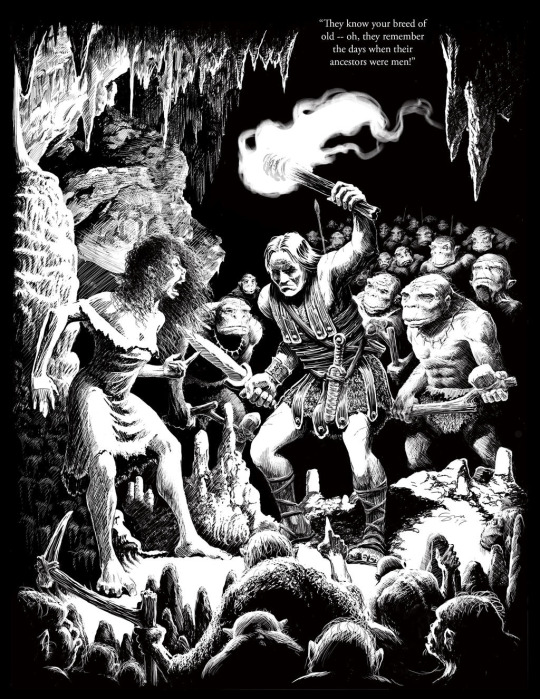
Displaced by the arrival of Indo-European language speakers at the dawn of the Bronze Age, these original, not quite human stone age people of Europe were driven deep underground into caves and barrows below the earth, where they went mad, adapted to the darkness and acquired a fear of daylight, became extremely inbred, in some cases acquired widespread albinism. It is these strange little people who gave the descendants of Europeans a haunting racial dread of places below the earth like mines and caves, and it also is these strange, hairy troglodytes who originally built the uncanny and mysterious menhir, fairy rings, and stone age structures of England, Scotland, and Ireland that predate the coming of the Celts and Romans.
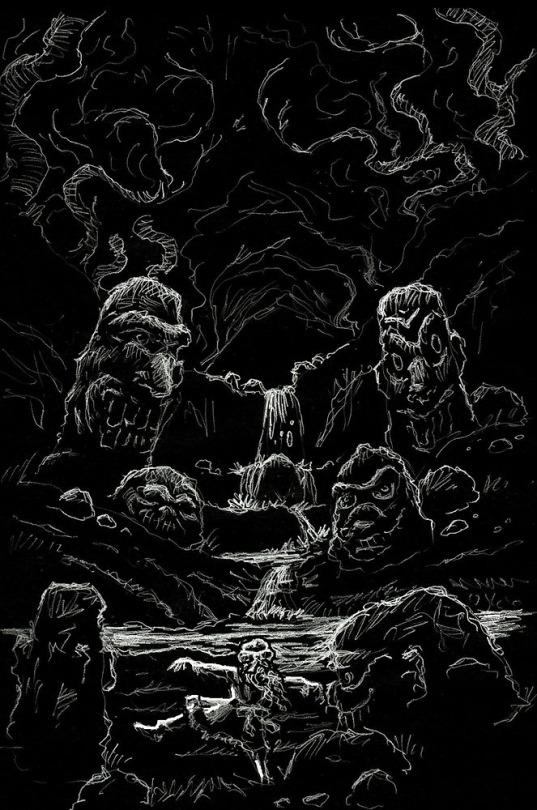
In some cases, these evil troglodytes are usually identified with the mysterious Picts, the pre-Celtic stone age inhabitants of the British Isles. In some cases, they are identified with the Basque people of Spain, best known as the inventors of Jai Alai, and the oldest people in Europe who speak a unique language unrelated to any in the world.
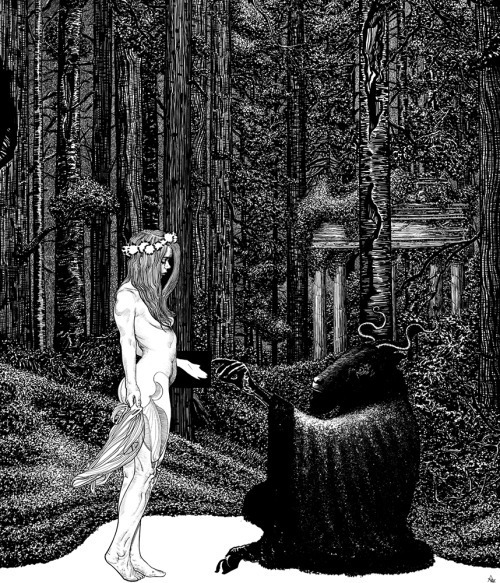
The original codifier of this trend was Arthur Machen, a horror writer who is less remembered than his contemporary, Henry James, but who may be the best horror writer in the generations between Poe on the one end and Lovecraft/CL Moore/Clark Ashton Smith on the other. His story, "the White People" from 1904 (a reference to their strange cave albinism) was a twisted Alice in Wonderland with a girl who is irresistibly attracted to dark pre-Roman stone age ruins and who is eventually pulled underground.
In addition to being a great horror writer, Arthur Machen was a member of the Hermetic Society of the Golden Dawn, an occult organization, and was often seen at the Isis-Urania Temple in London. Many of his works have secretive occult knowledge.
H.P. Lovecraft in particular always pointed out Arthur Machen as his single biggest inspiration, though he combined Machen's dread and occultism with Abraham Merritt's sense of fear of the cosmic unknown, seen in "Dwellers in the Mirage" and "People of the Pit."

Another and scarier example of this trend would be "No Man's Land," a story by John Buchan, a Scotsman fascinated by paganism and horror, who often wrote stories of horrific discoveries and evil rites on the Scottish moors. He is often reduced to being described as a "Scottish Ghost Story" writer, a painfully reductivist description as in his career, Buchan wrote a lot of thrillers, detective, and adventure stories as well. In later life, he was appointed Governor General of Canada, meaning he may be the first head of state to be a horror writer.
It was Buchan who first identified the cave creatures with the Picts, something that another Weird Tales writer decades later, Robert E. Howard, would roll with in the 1920s.

Howard is a very identifiable kind of modern person you often see on the internet: a guy who talks tough, but who was terrified to leave his small town. He created manly man, tough guy heroes like Conan the Barbarian, Kull, and El Borak, but he himself never left his mother's house. It's no wonder he got along well with his fellow Weird Tales writer and weird shut in, HP Lovecraft. With 1920s Weird Tales writers, despite your admiration for their incredible talent, you also can't help but laugh at them a little, a feeling you also apply to a lot of Victorians, who achieved incredible things, but who are often closet cases and cranks who died virgins ("Chinese" Gordon comes to mind, as does Immelmann).
With Howard, his obsession with the Picts and the stone age cave dwelling people of Europe started with an unpublished manuscript where at a dinner party, a man gets knocked out and regresses to his past life in the Bronze Age, where he remembers the earliest contact between modern humans and the original inhabitants of the British Isles, the evil darkskinned Picts. This is a mix of both the "little cave people" story and another cliche at the time, "the stone age past life regression novel," another turn of the century cliche.
Still with the Picts on his mind, Howard would later create Bran Mak Morn, a Pict chieftain, who predated Kull and Conan as his Celtic caveman muscle hero. Howard was of Irish descent and proudly anti-Colonial and anti-British, with his Roman Empire and Civilized Kingdoms as a stand in for the British and other Empires, which he viewed as rapacious and humbug, a view shared by his greatest inspiration, Talbot Mundy. His "Worms of the Earth" gets to the heart of why these little cave people scare us so much: they remind us that we live on land that is impossibly ancient and we don't fully understand at all.
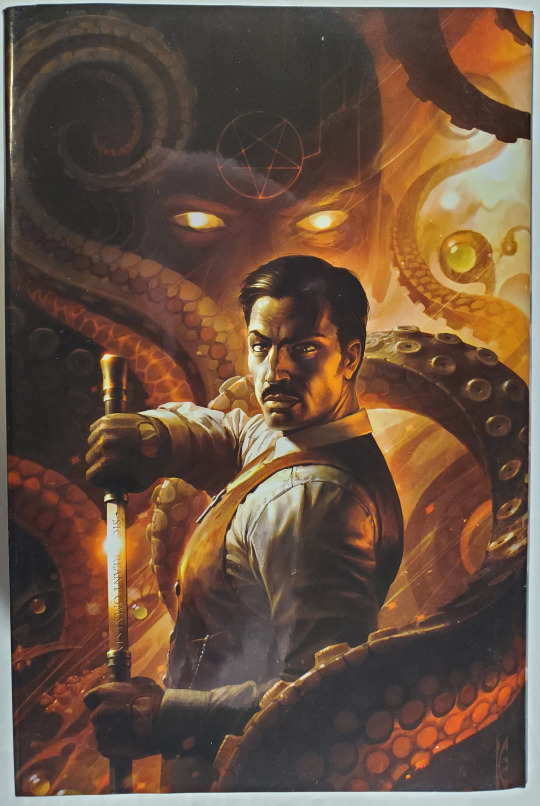
It was another Weird Tales Writer a decade later who wrote one of the last stories about the little hairy cave people of Europe, though, Manly Wade Wellman in 1942. Wellman was mainly known for creating the blond beefcake caveman hero Hok the Mighty set in stone age times, and for his supernatural ghost stories of Silver John the Balladeer set in modern, ghostly Appalachia (like many ex-Weird Tales writers, he made a turn to being a regional author in his later career, in the same way Hugh B. Cave became a Caribbean writer), but Wellman also had a regular character known as John Thunstone, a muscular and wealthy playboy known for his moustache who used his great wealth to investigate the supernatural and the occult. Thunstone had a silver sword made by St. Dunstan, patron of Silversmiths, well known for his confrontations with the Devil.
Most John Thunstone stories featured familiar stories, like a demon possessed seance and so on, but one in particular featured a unique enemy, the Shonokins.
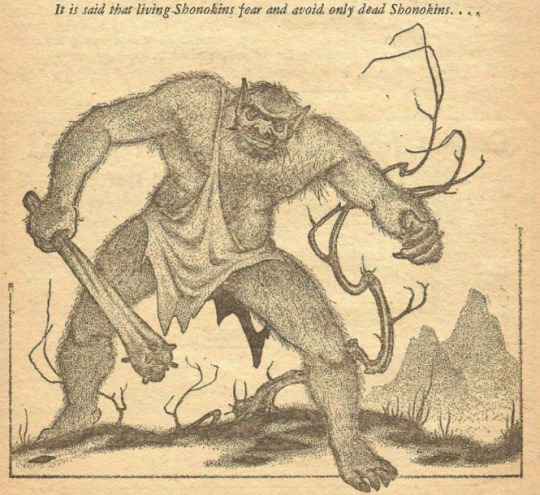
The Shonokins were the original rulers of North America, descendants of Neanderthal man displaced by American Indians. This fear that the land we live is ancient and unknowable and we just arrived on it and don't know any of its secrets is common to settler societies, who often hold the landscape with dread, as in Patricia Wrightson's fantasies of the Australian Outback. It was easy enough to transport the hairy cave people from the Scottish Moors to North America. I suspect that's what they are, a personification of a fear shared in the middle class, that in the back of their minds, that everything they have supposedly earned is merely an accident of history, built by rapacity and the crimes of history, and that someday a bill will come due.
A text page in the May 1942 issue of Weird Tales gives strange additional information on the Shonokins not found elsewhere:
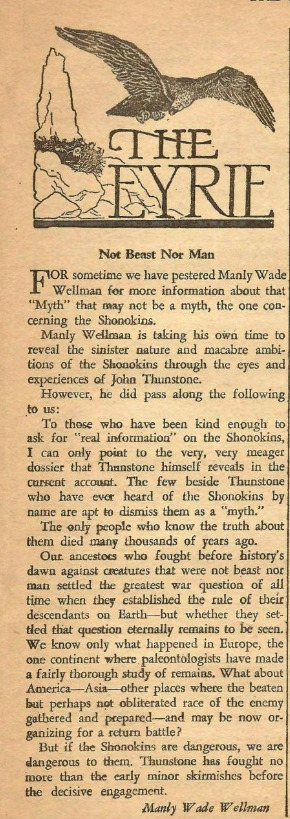
Since then, there have been too many examples of evil cave people who predate Europeans. Philip Jose Farmer's "The All White Elf" features the last survivor of a pre-European people who live in caves. A lot of other fiction of course has featured the Picts, but according to our modern scientific understanding, which describes them as much, much less exotically, as a blue tattooed people not too different and practically indistinguishable from the Celtic tribes that surrounded them, and which they eventually blended into.
454 notes
·
View notes
Text

From Outlander to intrepid hiker to whisky distiller, Sarah Tucker meets a warrior spirit in actor and entrepreneur Sam Heughan…
There is something of the poet adventurer in Sam Heughan, the actor best known for his eleven-year tenure as the handsome Jacobite warrior Jamie Fraser in the series Outlander, who meets and falls in love with time-travelling 20th-century nurse Claire Beauchamp, played by Caitriona Balfe.
Meeting him, albeit over a zoom call, I get the feeling this is a man who never sits still, is eternally curious about life, has boundless intellectual as well as physical energy – a doer who enjoys getting his hands dirty.
“I don’t think Fraser would like me,” Heughan commented recently, “He would consider me a stupid actor.” I disagree. When Heughan speaks about his life, and work, he shows a keen sense of purpose, practicality and determination. He shows a wit and versatility which makes him resourceful. All qualities of which Jamie Fraser would approve.

Heughan’s deep-rooted passion for Scotland and all things Scottish is evident in how his face lights up when he describes the mysterious landscapes he has encountered while working on Outlander and Men in Kilts. The images he conjures are visceral.
“My uncle, for a time, lived on the Isle of Eigg, and there’s a group of Islands, Muck, Mull, Rum, really interestingly-named places, lying south of Skye. My family would visit every summer; catch a ferry across to the Isle of Eigg and see the landscape completely differently. Once we hit the North Sea, I would feel like an explorer. The Ferry was the only way to get around before the [English] military built the roads. The clans controlled the ocean.”
From the standing stones of Clanais on the Isle of Lewis, where Outlander was filmed to the Schiehallion, one of Scotland’s most popular munros, he seems bewitched by the legends as much as the energy surrounding these places
Although he admits the final chapter on Outlander left a void in his schedule (the crew became like a family, the wrap party was held outdoors with bagpipes and a ceilidh), in December he will be in Nepal, trekking up Everest to Base Camp (the hard way) with acclaimed mountaineer Jake Norton. He met Norton while preparing for a role in a film about the explorers Stanley Irvine (1902 – 1924) and George Mallory (1886 – 1924), whose ill-fated attempt on Everest has gone down in history. Norton was on the team that found Mallory’s remains in 1999. Irvine’s partial remains were only found earlier this year.
“We will be trekking through a lesser-known valley that no one has ever been to before, which will mean reaching a 19,000-foot ridge and rappelling down into the valley, so that will be quite an experience. I’m terrified, but I have a great respect for that mountain. I am not doing this for television or film – I am just doing this for myself.”
Heughan’s voice is as smooth as his whisky. His latest venture is his multi-award-winning whisky and gin, ‘The Sassenach’, the Gaelic word for ‘outsider’. He feels he is an outsider to the industry, but the idea behind the name seems to have emerged from his mother, who is an English artist and was called ‘Sassenach’ when she arrived in New Galloway, and in Outlander, Jamie Fraser calls his wife Sassenach as s term of endearment. “The name is very special to me,” he tells me.
“Five years back, I travelled a lot, and I remember being in a bar in London. It was a Scottish celebration of some sort – St Andrews Day or perhaps Burns Night. There was a single malt on the bar’s top shelf, and as soon as I tasted it, it reminded me of Scotland. I have an emotional reaction to it, but with other spirits, less so. It made me feel quite homesick. It is Scotland in a bottle…it is personality in a bottle.”
Watching Heughan talk about the whisky, the research which goes into it, the foibles of flavour, which leaving it outdoors, or adding water or ice to it, has on the ABV (alcohol content), it is clear he enjoys learning about the alchemy of the blending possibly even more than he does enjoy drinking the final product. He talks of the influence of the terroir and water, how he likes the taste to weigh heavy on the palate, and the influence of Asian whisky on the final blend with its balance of butterscotch, honey, crab apple, rhubarb, which reminds him of picking the fruit from his mother’s garden.
Something of the ghost of Jamie Fraser has lingered in this entrepreneur. As Heughan admits himself, he has been playing someone else for eleven years, and observing him talk about Scotland and The Sassenach brand, he appears to have captured some of that warrior spirit. Or perhaps, it is the other way round, and he injected his own spirit into the character.
Sam Heughan reached Everest based camp on Friday 20th December.
49 notes
·
View notes
Text
Okay okay okay but if it’s true that Ingrid was made by Freyr, then why the hell does his Sheith for Ingrid have the fucking Celtic Triskelion on its medallion????

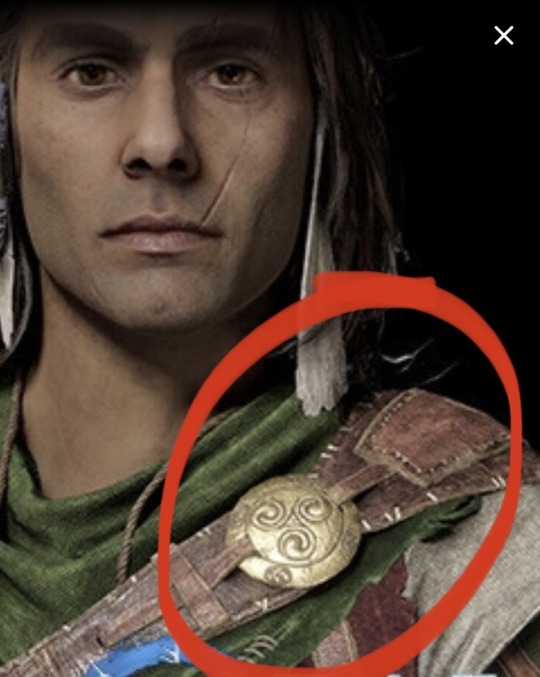

And the fact that Ingrid— a literal sword of light—seems to look nothing like any sword that we've seen (not even freya's sword) be similar to the “sword of light” of Celtic mythology????
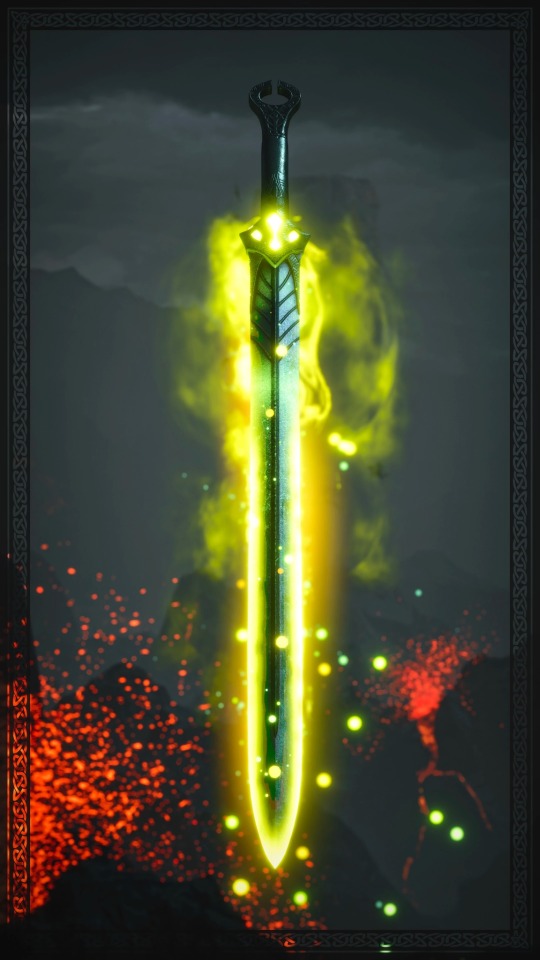

As well as the fact that throughout Ragnarok, there were so many references to Celtic/Irish/Scottish/British Isle specific mythology and stories:
Kelpies
mentions of Arthurian Legend of The Lady of the Lake, Nimue
The Scottish play which shall not be named (Shakespeare)
mentions of Oberon and Tatiannia
Mimir being opening called “Puck” from a Mid-Summers Nights Dream by The Norns (Shakespeare)
Mimir’s story about the Laird (The scottish name for a lord) and The Girl
The fact that the British isles is geographically closer to Scandinavia than any other mythological location
the fact that the biggest mystery as to what happened to the remaining giants of Jotunheim is still ongoing and Atreus is now on his quest to find what happened to them and where did they go
And the fact that the Ragnarok ending heavily hinted at the fact that Atreus could have his own spin-off game in the future
Also the fact that the formorians of celtic mythology are often linked to being giants/vikings that came from scandinavia (AKA home of Norse Mythology)
Santa Monica Studios: The math is not mathing, the mythology is not mythology-ing.

#God of war#God of war Ragnarok#gow ragnarök spoilers#gow#Kratos#Atreus#Freyr#Freya#Angrboda#Mimir#Thrud#Thor gow#Odin#Santa Monica Studios#sony playstation
826 notes
·
View notes
Text


❀ꗥ~ꗥ❀ 𝐇𝐞𝐲 𝐠𝐮𝐲𝐬! 𝐓𝐡𝐢𝐬 𝐢𝐬 𝐜𝐡𝐚𝐩𝐭𝐞𝐫 𝐨𝐧𝐞 𝐨𝐟 ‘𝐨𝐛𝐬𝐞𝐬𝐬𝐢𝐨𝐧.’ 𝐈 𝐚𝐦 𝐧𝐞���� 𝐭𝐨 𝐭𝐡𝐞 𝐂𝐎𝐃 𝐟𝐚𝐧𝐝𝐨𝐦, 𝐬𝐨 𝐢𝐟 𝐲𝐨𝐮 𝐬𝐞𝐞 𝐚𝐧𝐲 𝐦𝐢𝐬𝐭𝐚𝐤𝐞𝐬/𝐭𝐡𝐢𝐧𝐠𝐬 𝐭𝐡𝐚𝐭 𝐝𝐨𝐧’𝐭 𝐦𝐚𝐤𝐞 𝐬𝐞𝐧𝐬𝐞, 𝐟𝐞𝐞𝐥 𝐟𝐫𝐞𝐞 𝐭𝐨 𝐨𝐮𝐭 𝐦𝐞. 𝐀𝐩𝐚𝐫𝐭 𝐟𝐫𝐨𝐦 𝐭𝐡𝐚𝐭…𝐞𝐧𝐣𝐨𝐲! 𝐓𝐡𝐢𝐬 𝐢𝐬 𝐚𝐥𝐬𝐨 𝐚 𝐦𝐨𝐝𝐞𝐫𝐧 𝐚𝐮…𝐤𝐢𝐧𝐝 𝐨𝐟. 𝐘𝐨𝐮’𝐥𝐥 𝐡𝐚𝐯𝐞 𝐭𝐨 𝐬𝐞𝐞. ;) 𝐘𝐨𝐮 𝐰𝐢𝐥𝐥 𝐛𝐞 𝐩𝐥𝐚𝐲𝐢𝐧𝐠 𝐚𝐬 𝐭𝐡𝐞 𝐜𝐡𝐚𝐫𝐚𝐜𝐭𝐞𝐫, “𝐄𝐥𝐢𝐣𝐚𝐡” 𝐚𝐧𝐝 𝐲𝐨𝐮 𝐜𝐚𝐧 𝐢𝐦𝐚𝐠𝐢𝐧𝐞 𝐡𝐞𝐫 𝐭𝐨 𝐥𝐨𝐨𝐤 𝐡𝐨𝐰𝐞𝐯𝐞𝐫 𝐲𝐨𝐮 𝐥𝐢𝐤𝐞! ❀ꗥ~ꗥ❀
𝐒𝐮𝐦𝐦𝐚𝐫𝐲: 𝐬𝐭𝐚𝐥𝐤𝐞𝐫 𝐊𝐨𝐧𝐢𝐠 𝐱 !𝐟𝐞𝐦! 𝐑𝐞𝐚𝐝𝐞��. 𝐘𝐨𝐮’𝐫𝐞 𝐰𝐨𝐫𝐤𝐢𝐧𝐠 𝐟𝐨𝐫 𝐊𝐨𝐫𝐓𝐚𝐜 𝐚𝐧𝐝 𝐤𝐞𝐞𝐩 𝐠𝐞𝐭𝐭𝐢𝐧𝐠 𝐚 𝐬𝐭𝐫𝐚𝐧𝐠𝐞 𝐩𝐚𝐢𝐫 𝐨𝐟 𝐞𝐲𝐞𝐬 𝐚𝐥𝐰𝐚𝐲𝐬 𝐥𝐨𝐨𝐤𝐢𝐧𝐠 𝐚𝐭 𝐲𝐨𝐮. 𝐊𝐨𝐧𝐢𝐠 𝐢𝐬 𝐚𝐰𝐤𝐰𝐚𝐫𝐝, 𝐚 𝐥𝐢𝐭𝐭𝐥𝐞 𝐬𝐡𝐲, 𝐡𝐞 𝐡𝐚𝐭𝐞𝐬 𝐬𝐩𝐞𝐚𝐤𝐢𝐧𝐠 𝐭𝐨 𝐩𝐞𝐨𝐩𝐥𝐞. 𝐁𝐮𝐭 𝐈𝐬 𝐡𝐢𝐬 𝐬𝐢𝐥𝐞𝐧𝐜𝐞 𝐞𝐯𝐞𝐧 𝐚𝐧 𝐞𝐱𝐜𝐮𝐬𝐞 𝐟𝐨𝐫 𝐟𝐨𝐥𝐥𝐨𝐰𝐢𝐧𝐠 𝐲𝐨𝐮 𝐡𝐨𝐦𝐞?𝐖𝐨𝐫𝐝 𝐜𝐨𝐮𝐧𝐭: 𝟏𝟐𝟎𝟎-𝟏𝟑𝟎𝟎 𝐰𝐨𝐫𝐝𝐬.
❀ꗥ~ꗥ❀!𝐊𝐨𝐧𝐢𝐠 𝐱 !𝐟𝐞𝐦! 𝐑𝐞𝐚𝐝𝐞𝐫. ❀ꗥ~ꗥ❀

Obsession.

Chapter 1.
Ever since I started your new job at KorTac, which was now a few years ago, Konig had always been like this. And when I mean, 'like this,' I mean completely obsessed with me.
I'm not intending to sound stuck up my own ass or self obsessed, I mean it literally. Konig had a problem. Everyone around me had caught onto the fact he couldn't keep his eyes off of me during work, and up until a few months ago, everyone took it lightheartedly.
John and Gaz made the subtle comments and teases about Konig having a simple liking towards me, nothing more nothing less, but when a few months ago I found him outside my door, I didn't take it as blithely.
John had described Konig as a simple man with few words, and much like Mr. Simon Riley, had a tendency to hide his face under a mask. Konig was a large Austrian man, towering at a petrifying height of 6'10 and had an undoubtedly dark aura that always surrounded him.
Today was yet another day of stressful work and I felt so under pressure with being placed in charge of shipment deals, which I'd been assigned to do by Mr. Price, especially when I constantly felt a pair of familiar eyes burning through the back of me all the time, always bringing the same chill to run up my spine.
As I work at my desk and try to shake off the feeling, I'm snapped out of my thoughts by a gentle hand on my shoulder. Mr. McTavish’s friendly demeanour and pleasant Scottish accent had caught my attention and indulged in a brief chat with me.
I spin on my chair to face him as he hands me a stack of papers, and as he did so, that same feeling of my neck hairs standing on edge shuddered across my body, forcing my eyes to wander behind him.
And there he was, Konig sat in his chair staring, but this time it was different. He wasn't staring at me, but at John, shooting daggers through the back of his head as his fists clenched by his ungodly huge thighs. Those same mysterious blue eyes that were wavering on the back of Johns head distracted me and I was sure I could see a vein bulge on his forearm.
I swallowed nervously, John's voice snapping me back into my reality.
“Sae by th' nicht, aye?”
His Scottish accent did snap my thoughts into gear and I glance up at him, shaking my head with a polite smile.
“yeah...yeah, sure by tonight."
He nods and walks off, humming a tune as he leaves the office. I turn back to my desk with a gruff sigh, groaning quietly at the fact I had so much work to finish tonight.
By the time work was over, I was exhausted and already on the way home. I decided to stop by at one of the shops across from my apartment at around six, the sky already a darkening hue due to the frosty winter season that was now making me regret not buying gloves. I was browsing through the isles, trying to figure out what shitty meal to eat for dinner when a scruffy male stopped by. He was taller than me, a disheveled beard surrounding his mouth chapped lips, staring at what I had in my hand with a toothy grin.
"good choice."
He commented, now glancing me up and down.
"You seem quite tense."
He says. I stare at him, bewildered at what he was saying. Strange, but okay. I smiled politely at him, thinking he was just trying to be chatty until he took a step closer.
"I could take you back to my place again and ease that problem for you."
Knowing what he meant, I shook my head.
"Seriously? You're one strange fucker. No."
"You ain't going anywhere,"
his voice was slurred, clearly drunk, but without a single second being able to pass by, a large figure appeared from behind the shelves and grabbed his shirt by the cuff. Konig stared down at his body as he violently pressed him against the shelves, making some cereal boxes topple down and somehow making the quivering man look unbelievably smaller.
"Don't fucking touch her. You even look her way and I'll break both of your legs."
He spits, his German accent thick through his anger, the man who he held by the scruff now trembling, grabbing onto Konigs wrist and trying to shake the undeniably strong grip off of him. Konig stared at the man with pure venom for a few moments, breathing heavily as the veins in his hands protruded through his skin. After a few moments of this, Konig let him go with a push, towering over him as he toppled from the sudden force that shot him backwards.
Konig now returned to my side and made sure he left, watching as the startled man stumbled and murmured curses under his breath. But all I could do was crane my neck up at Konig and stare at him, a single question going through my head.
How was he here at such perfect timing?
The thought scared me and intrigued me, but I realised that was probably the first time I'd ever heard him speak.
"Are you alright, Elijah?"
He breathed out, his gorgeous blue eyes scanning across my face and his accent sounding so sweet. Hell, I was scaring myself with the thought of him even being labelled as sweet. I could tell through the fabric of his mask he was frowning in a worried manner. I wonder what he looked like under that mask...

#konig mw2#konig smut#konig headcanons#konig x you#konig x y/n#konig x oc#konig x reader#konig modern warfare#Konig#cod x oc#cod x reader#cod x you#cod x y/n#ghost#simon ghost riley#Simon Riley#Simon Riley ghost#soap mctavish#john mctavish#ghost cod#ghost mw2#cod mw2#soap mw2#gaz garrick#price cod#fanfic#smut#smutty#cod smut#cod headcanons
185 notes
·
View notes
Text
An American in Scotland by Lucy Connelly
An American in Scotland by Lucy Connelly was a library book. It is the first in the Scottish Isle Mystery series and is a cozy mystery. Dr. Emilia McRoy accepts a job offer to become the town doctor for Sea Isle, Scotland. She uproots her life and moves from Seattle to Scotland. What she never foresaw was a murdered man within hours of arriving in town, an overbearing laird, and finding herself…

View On WordPress
#2023 Protagonists Pub Reading Challenge#2023 Reading Challenge#books#cozy mystery#fiction#Lucy Connelly#mystery#reading#Scottish Isle Mystery
1 note
·
View note
Text
The Scottish Highlands 🏴 is the largest region in Scotland and was unsurprisingly named as one of National Geographic's "Best of the World" destinations. Visitors can explore medieval castles, the mysterious Loch Ness, passing through the striking Glencoe National Nature Reserve and Cairngorms National Park, or discover the rugged coastline of Caithness in the Far North of Scotland.
Inverness, Capital of the Highlands!
The city of Inverness has played a key role: throughout Scottish history. It was the capital of the Picts in the Middle Ages, during which time St. Columba visited in 565, converting the King of the Picts to Christianity.
The kingdom of Alba would later be created when the kingdoms of the Scots and Picts were united in 843. This developed into the Scotland we know today. Two hundred years later, Macbeth is said to have murdered King Duncan in his castle in Inverness.
During this era, the town was the site of many battles and skirmishes. One of the most destructive occurred when the Abbot of Arbroath had his men burn down large parts of the town. The town was burnt down a second time in 1411 by Donald, Lord of the Isles.
During the Early Modern Age, was substantial tension between the Highlands and the Scottish crown. This was shown in 1562 when the governor refused Mary, Queen of Scots entry - an act he would go on to be hanged for. In 1746 Inverness Castle was captured by Jacobites. When they were defeated at Culloden in April, the rebels were sacked from the castle. A large fortification was built to prevent such uprisings from occurring again.
The industry of Inverness was largely related to shipbuilding from the Middle Ages, however, other industries grew such as whisky distilling. By the late 20th century, industry in Inverness had been transformed. Although it was still a busy port, tourism had become a major industry in the region, in large part due to the myth of the Loch Ness monster.
The Highland Council is the administrative body for much of the Highlands, with its administrative centre at Inverness. However, the Highlands also includes parts of areas of Aberdeenshire, Angus, Argyll and Bute, Moray, North Ayrshire, Perth and Kinross, Stirling and West Dunbartonshire.
By @castlesofscotland
Posted 28th January 2025
17 notes
·
View notes
Text
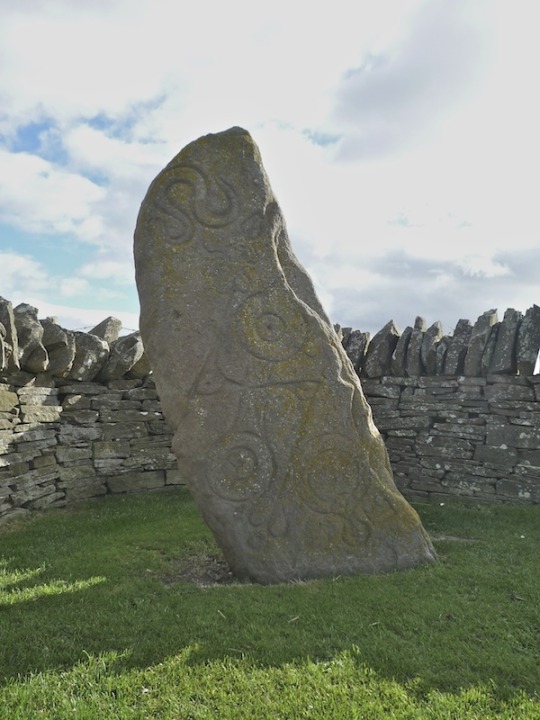

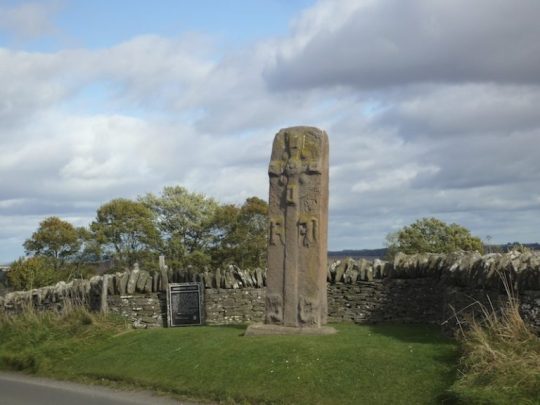
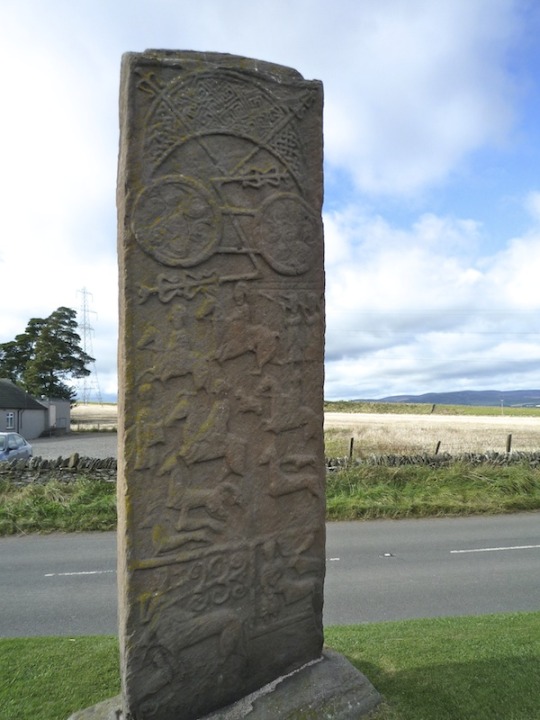

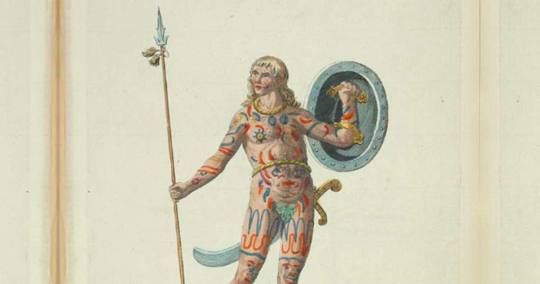
On 20th May 685 The Picts won a decisive Battle , in present-day Angus, known as The Battle of Dun Nechtain or Battle of Nechtansmere.
A wee bit longer post than I normally give you, but it is a great story, the first part tells us how a battle against The Angles helped shape the country we now know as Scotland, the second is a tale from the twentieth century, both stories are connected, read on and enjoy.........
Known as 'Picti' by the Romans, meaning 'Painted Ones' in Latin, these northern tribes constituted the largest kingdom in Dark Age Scotland. They repelled the conquests of both Romans and Angles, creating a true north-south divide on the British Isles, only to disappear from history by the end of the first millennium - swallowed whole by the history of another group, the Gaels. Together they created the Kingdom of Alba.
The Picts took part in one of the most decisive battles in Scottish history - the Battle of Dun Nechtain (Dunnichen). If the Picts had lost, Scotland might never have existed. For the Angles of Northumbria it was simply a disaster - ending their domination of Scotland.
The Battle of Dun Nechtain was fought on this day in 685 AD and is one of the best recorded events in Dark Age Scotland.
The Kingdom of the Angles under King Oswui had rapidly expanded north, moving their frontier from the River Forth to the River Tay. Since 653 AD many of the major groups of people in Scotland - Britons, Gaels and much of Pictland - had been subject to the overlordship of King Oswui. In 672 AD, after the death of Oswui, the Picts rose against their overlords, expelling Drust, their Northumbrian puppet king.
The new King of Northumbria, Ecgfrith, wasted no time in wreaking revenge on the Picts. The Picts were massacred at a battle near the town of Grangemouth, where the rivers Carron and Avon meet. According to Northumbrian sources, so many Picts died they could walk dry-shod across both rivers. By 681 AD Ecgfrith had founded a bishopric at Abercorn on the southern shore of the Forth - a symbol of Northumbria's secure grip over the Picts.
The defeated Picts took Bridei, son of Bili, as the king of a much depleted Pictland. King Bridei was actually the cousin of his mortal enemy, King Ecgfrith of the Angles, but, in true Dark Age fashion, this didn't diminish their mutual desire to destroy each other. An almighty battle was on the cards.
The Chronicle of Holyrood gives us an account of the battle: "In the year 685 King Ecgfrith rashly led an army to waste the province of the Picts, although many of his friends opposed it...and through the enemy's feigning flight he was led into the defiles of inaccessible mountains, and annihilated, with great part of his forces he had brought with him." However, we need to keep in mind this account was written hundreds of years after the event.
The Angles were advancing up Strathmore, probably aiming for the Pictish fortress of Dunnottar, when they fell into Bridei's trap. Sighting a Pictish warband, the Angles set off in pursuit, then, as they came over the cleft in Dunnichen Hill, they found themselves confronted by the main body of the Pictish army. Caught between the Picts and the loch below the hill, the Angles bravely faced their doom.
The politcal map was altered. The Picts, Gaels and many Britons were freed from Northumbrian overlordship. Gaelic poets as far away as Ireland celebrated the battle's outcome. The Pictish frontier returned to the River Forth near Edinburgh and the Bishop of Abercorn fled, never to return. The Angles never fully recovered as major force in Scotland.
It is no coincidence that the Picts mysterious disappearance occurs at the same time as the creation of the kingdom of Alba. For many years Gaelic influence in Pictland had been on the rise. The Gaelic religion of Christianity had spread throughout Pictish lands and with it many Gaelic traditions. Furthermore, through a mixture of conquest and inter-marriage Gaelic or Gaelicised royalty had succeeded to the Pictish throne (a notable example of this being Kenneth MacAlpin).
Finally in 878 AD the Pictish king, Áed, was murdered and replaced by a Gael - Giric. Giric accelerated the Gaelic takeover of Pictish politics during his reign making the Gaelic language and traditions commonplace. Even after Giric was finally deposed in 889 AD future Pictish kings such as Donald and Constantine embraced Gaelic culture. By 900 AD Pictland ceased to exist. The reign of Donald is listed in the Chronicle of the Kings of Alba as a king of Alba. Pictland and Dál Riata had gone and in their place Alba - a Gaelic word for Scotland - was created. In this simple listing in an obscure book Scotland has its origins.
Fast forward over 12 hundred years to the 2nd January 1950, and a woman called Miss E.F. Smith, described as a spinster, was driving home from a party in Brechin at about 2am. Her car had skidded into a ditch 2 miles outside the area due to the treacherous road conditions. She still had another 8 miles to go so she continued her journey on foot. She felt oddly nervous as she walked along the minor road west of the A932, then she saw a number of strange lights in the distance near Dunnichen Hill. Turning south towards the village, she noticed figure in the field to her right, part of Drummietermont Farm. Each figure carried a flaming red torch in its left hand and they seemed to be searching the ground for something.
Miss Smith then saw shapes on the ground exactly like dead bodies. The figure nearest to her stooped down and examined several of these ‘corpses’, turning them over and back again, as if looking for recognisable faces. This scene lasted for around ten minutes, with Miss Smith’s dog barking throughout. Eventually she simply walked away. She only realised that the whole event was peculiar when she woke up next day and thought about it. Later she gave details of the experience to the Society for Psychical Research. She reported that the searchers wore garb like body stockings, along with tunics and flattened oval helmets. They appeared to be moving around the edge of the vanished mere, the shape of which was later traced by archaeological investigation.
Although this post battle manifestation has not been repeated. some motorists passing through Dunnichen on misty nights have caught sight of fleeting human forms which vanish before their cars hit them.
There is some skepticism as to how real Miss Smith’s sighting was. She was travelling very late at night and had already walked a number of miles, not to mention suffering a trauma from skidding her car into a ditch. The vision could have been brought about as a result of exhaustion and the effects of the cold. However, the fact that it occurred at the exact site of the Battle of Nechtansmere seems to be too much of a coincidence and it is unlikely that the woman’s dog would react to something that occurred only in his owner’s mind.
The pictures are of Pictish stones from around Aberlemno that perhaps tell the story of the battle.
86 notes
·
View notes
Text
Episode 113: The ABC's of BBC's

Do unknown giant felids stalk the moors of Great Britain? Do Scottish sheep have something else to fear on the shores of Loch Ness? Do cats recognize the monarchy? This time wildlife biologist and Least Haunted's resident "Cryptid Hunter" Carolyn joins us once again to take a look at the mystery of Alien Big Cats.
Check out the images below discussed in this week's episode and please come join the episode discussion on the Least Haunted Discord!
Scottish Wildcat, the native wild cat of the British Isle (learn more about them and what threatens them at https://www.woodlandtrust.org.uk/trees-woods-and-wildlife/animals/mammals/scottish-wildcat/)

Kellas cat, a hybrid of Scottish Wildcats and domestic cats, inspiration for the folklore of cat-sìth ('fairy cat') (taxidermy specimen from the University of Aberdeen Collection)

Felicity (mountain lion remains pictured below) is an example of a released wild cat that was believed to have formerly been someone's pet who was released into the wild. Why did they think she used to be a pet? She enjoyed being tickled and preferred processed foods. When she was caught, she was taken to live out the rest of her life at Highland Wildlife Park in Kincraig where she was named Felicity.

An example of meow-staken identity: https://nypost.com/2024/04/03/us-news/cmountain-lion-on-security-camera-turns-out-to-be-cat-police/

Finally, the only alien cat we believe in at LH HQ is Jake the cat from The Cat From Outer Space. Go watch this movie and believe in Jake too!

#leasthaunted#podcast#funny#paranormal#podcasts#skeptics#cryptids#cryptozoology#great britain#british big cats#big cats#wild cats#cats#cat sith#wildlife#the cat from outer space
21 notes
·
View notes
Text
Saturday Movie Night: Railscale 1
Here's an idea I've been sitting on for ages, which I hope will become a semi-regular feature on this here blog. It's a pretty basic idea - every week (if I remember), I share a video on here which I think you guys would be interested in seeing. Naturally, that means a lot of the videos will be to do with Thomas, or real-life railways (real and model), or anything else I decide is worth sharing.
I don't know if anyone here has heard of Phil Parker, but yes, I am basically ripping off the Saturday Film Club feature he does on his blog.
youtube
You may well remember me talking about Railscale a couple of years back. Well, since then, someone's gone and uploaded all three issues to YouTube (see that earlier post for why there were no more). So I thought, what better way to kick off this semi-regular feature?
See above to watch the programme, and see below for more details about the contents.
THE BROMFORD & HIGH PEAK RAILWAY (7mm/O)
This huge, spectacular O gauge layout was deliberately shrouded in mystery by its creator, Ferrari importer Ronnie Hoare. For security and insurance reasons, he rarely allowed visitors to the layout - the Railscale team were thus privileged to be allowed to film it for this feature. The layout itself featured over a scale mile of track, and included models from some of the country's leading model makers.
INSIDE A SAWMILL (7mm/O)
We next look around Les Tindal's scale model of an American sawmill of the interwar period. The sequence shows how Les adds details and develops scenery, and finishes with a look at huge he achieves the authentic weathering of timbers and metals.
PECORAMA (Various)
Pecorama is a permanent model railway exhibition in sunny south Devon, own and operated by the PECO company. They believe that any house or flat can accommodate a model railway, and the layouts on display have been made with this philosophy in mind.
WINCHESTER CHESIL (4mm/P4)
The Scalefour Society was one of the leading pioneers in the great push towards greater realism for model railways. This exact scale model of the GWR's Winchester station was made by society members from the Southampton area, and they take up the story of how the model came into being.
BOYTON CROSSING - PART 1 (4mm/OO)
The first in a series of segments demonstrating the construction of a model building - based on the crossing keeper's cottage at Boyton, on the Salisbury-Warminster line. Railscale's resident model maker, Mike Jolly, talks us through the process of researching and measuring the prototype, before building up the basic structure with card and embossed sheets.
LIVE STEAM ON THE ISLE OF MULL (Live Steam/10.25")
In 1984, a miniature railway opened on the Scottish island of Mull, linking Torosay Castle to the ferry pier at Craignure. The line has since developed into a tourist attraction in its own right. Nick Dodson of Railfilms shows us around, and talks with founder Graham Ellis.
PROJECT N - PART 1 (2mm/N)
Mike Jolly returns to commence the construction of an N gauge layout. After deciding on the plan, he chooses and cuts the timber, and makes a start on assembling the baseboard.
COACH CONVERSION (2mm/N)
Railscale 1 concludes with this short segment, demonstrating how to convert a Graham Farish BR Mk2 coach, to represent types not available in the ready-to-run market.
12 notes
·
View notes
Text
Faeries in Uig
The Isle of Skye, off Scotland's west coast, is rich in myth and tradition, particularly in Uig. Cliffs, hills, and sea views surround Uig, famed for its association with Celtic faeries. Faeries have been part of the region's culture for ages, and Uig is home to the Faerie Glen, a notable faerie site. This magical place, with its peculiar geological formations and peaceful environment, has inspired many faerie stories. The Fairy Glen outside Uig is unique. A small, alien environment of conical hills, swirling ridges, and scattered lochs defines it. Castle Ewen, a natural rock formation that resembles a ruined stone tower, is the glen's most famous feature, further captivating travelers and residents. Reports suggest that faeries gather in the glen's hidden corners. Some think that the faeries balance magic and nature in the glen, and disrupting this balance might have fatal results.

Uig folklore depicts faeries as kind and playful. They guard the land, but with restrictions. Respectful visitors to the Faerie Glen are considered lucky, while those who disturb it face the wrath of the faeries. According to legend, individuals who removed stones or altered the glen's features had adverse luck until they returned them. Some residents discourage visitors from building stone circles or cairns, believing them to be insulting to the faeries and their habitat. The Celtic Otherworld, a mysterious realm akin to ours, is also associated with Uig's faeries. Scottish legend depicts faeries as middlemen between humans and otherworldly beings who can be benevolent and cruel. In Uig stories, faeries lure travelers into the glen with ethereal music or weird lights, leaving them lost and confused. In some stories, the person disappears, believed to have entered faerie. These cautionary tales remind us of the delicate line between nature and magic in Uig, where the land is believed to have ancient and mysterious powers. Humans and faeries in Uig are not necessarily hostile. People often depict faeries as kind or wise spirits who offer assistance when approached respectfully. Uig farmers offered milk or bread to the faeries for beneficial harvests or animal protection. Though forgotten today, these ceremonies show how firmly faerie beliefs were ingrained in daily life. Faeries were considered part of nature; therefore, a peaceful connection with them was vital to the community. Uig's faerie curiosity extends beyond the valley. Many spots in the hamlet and surrounding area are considered magical or related to the Otherworld. Some caves and waterfalls in the area are believed to be gates to the fairy realm, and visitors at night may see or hear the faeries dancing or laughing on the breeze. Such legends, which blend Uig's natural beauty with Celtic mythology, continue to captivate locals and visitors.

Uig and the Faerie Glen have gained popularity due to modern tourism, yet their magical atmosphere is at risk. The glen's unusual terrain and faerie stories draw many visitors, but awareness of the need to maintain this endangered habitat is growing. Fairy tales teach some to appreciate nature and tread carefully on the land. Uig stories inspire awe and respect for nature, regardless of faeries. Like the landscape, the Uig faeries exist between reality, imagination, history, and mythology. They recall a time when the human and supernatural worlds were considered permeable and magical entities explained natural riddles. The traditions of faeries at Uig continue to enthrall visitors to Skye, reminding us of how myth shapes our knowledge of our surroundings. The Uig faeries, whether guardians of the land or enigmatic emblems of the unknown, are part of Scotland's rich cultural legacy.
3 notes
·
View notes
Text

On this day:
SPECTER CITIES, SWORDS, AND SPIKES
On August 2, 1908, off the west coast of Ireland, a city hung suspended in the sky. Its houses displayed a diversity of styles, and it shone brilliantly for over three hours. In roughly the same vicinity, in 1840 and 1857, a sky island with crystal and pearl buildings, thought to be the mysterious city of the elusive fin folk, was seen from the Scottish Isle of Sanday. In 1881, a snow- and icicle-covered settlement, supposedly resembling an island village over a hundred miles away, was visible in Pomeranian skies. People could be seen moving about. In 1846, an apparition, suggested to be a projection of Edinburgh, hovered over the sky in Liverpool, England. In 1801, an aristocratic town, complete with shrub-ensconced mansions and backed by a forest, appeared over Cork, Ireland, where specters of a walled settlement had previously appeared in 1796 and 1797. The visions remained visible for thirty minutes. Specter cities have also been reported over the Bornholm Island in the Baltic, in Sweden, and in Ohio.
On August 2, 1888, a phantom army marched across the Croatian sky, their leader brandishing a flaming sword. Investigation ruled out the possibility of the apparition being a reflection of an actual event taking place in the area. In Ireland, 1797, armies of "fairies" trooped and battled over the bog near Maryborough at high noon.
On August 2, 1921, in West Germany, a nine-year-old boy and his uncle watched ball lightning the size of a watermelon come in through an open window, bounce across the floor, and then roll toward them, flashing green, red, yellow, and blue light. The surface of the ball became spiky, and the ball rolled across the stove, leaving a rut, before entering the air vent, where it exploded.
Text from: Almanac of the Infamous, the Incredible, and the Ignored by Juanita Rose Violins, published by Weiser Books, 2009
6 notes
·
View notes